Margate & Broadstairs Wastewater Pumping Stations (2017)
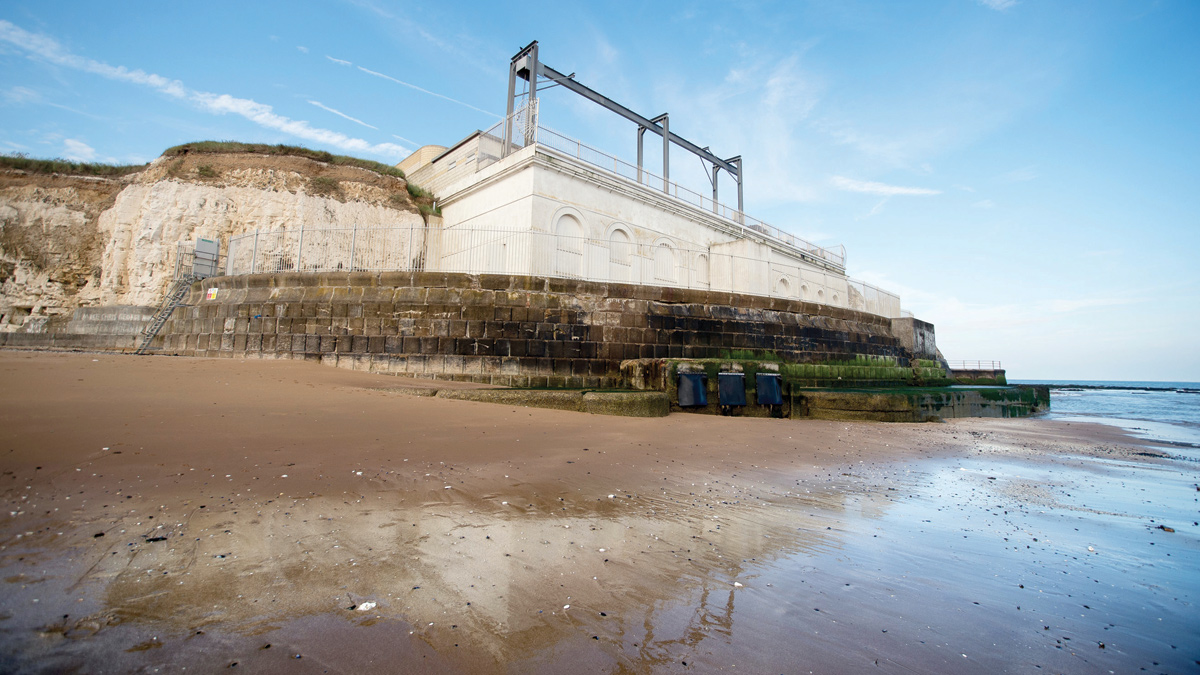
Margate WwPS is surrounded by a high concentration of Blue Flag beaches and sits within a popular tourist area - Courtesy of Southern Water
In 2008, Southern Water completed significant improvements to the wastewater treatment infrastructure serving the North Thanet catchments of Margate and Broadstairs to meet the requirements of the Urban Waste Water Treatment Directive. The existing marine head works at Joss Bay, Broadstairs and at North Foreland, Margate were upgraded to process screened flows and remove grit, alongside the construction of a new Wastewater Treatment Works adjacent to Southern Water’s existing site of Weatherlees Hill, named Weatherlees Hill B WwTW, to serve a population equivalent of 89,000.
Background to the scheme
Prior to these upgrades, the sites at Broadstairs and Margate worked independently. The completion of the 2008 upgrade scheme created the Broadstairs Wastewater Pumping Station (WwPS), and a wastewater pumping station with preliminary treatment at Foreness Point, called Margate WwPS. Both these pumping stations are surrounded by a high concentration of Blue Flag beaches and sit within a popular tourist area.
Broadstairs WwPS receives wastewater flows from the town of Broadstairs and its surrounding area via a combined sewer system. It has a lift and transfer pump system which can transfer up to 264l/s to Margate WwPS via a 2.4km, 450mm diameter pipe.
Margate WwPS receives wastewater flows from the North Thanet catchment via a combined sewer system, which mixes with the flows received from Broadstairs WPS. All receiving flows are screened and grit is removed before being forwarded by three transfer pumps, pumping in excess of 809l/s to Weatherlees Hill B WwTW over 11km away. Wastewater flows received at Weatherlees Hill B proceed through a step fed activated sludge plant, final settlement and ultra-violet disinfection before being pumped 11km back to Margate WPS where it is released via the long sea outfall in to the North Sea.
In 2012, pumping station failures during heavy rain resulted in pollution events, the closure of many of Thanet’s beaches for a period of nine days, and a follow up hand clean costing £400,000.
A fine of £2m was received in relation to this incident in December 2016. This followed a fine of £200,000 received in 2013 for breaching an Environmental Permit during 2011. As a consequence, and in order to reduce the risk of future incidents occurring, an extensive resilience scheme was initiated.
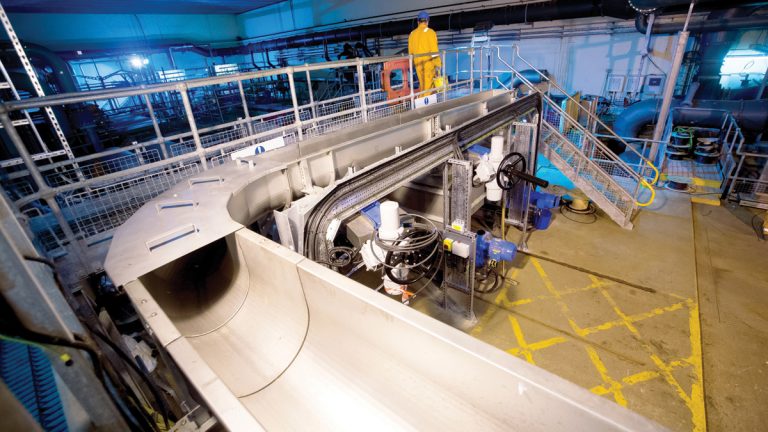
Significant improvements have been made to the wastewater treatment infrastructure at Margate and Broadstairs – Courtesy of Southern Water
Making improvements
The initial approach to the scheme was to first fix and rectify the results of the 2012 failures. Since those incidents, Margate WPS has been manned 24-hours a day to ensure that the process remains constant and any issues are spotted instantly and can be acted upon.
Heavy localised rainfall and plant failures over the Jubilee Bank Holiday weekend of 2012 resulted in the main treatment area of Margate WPS being under two foot of flood water. The resulting clean-up and remedial works to stabilise the process was the starting point to highlight which areas needing improved resilience.
- Inlet penstock control: As part of the resilience works a review into the inlet penstock control was carried out. Greater control over the operation of the penstock was added to ensure that the maximum flows are sent to site at all times. In addition, an isolation is to be installed to allow greater control and isolation of the inlet screws to maintain maximum flows to site, run on a duty/standby regime.
- Inlet screw auger: A review of the inlet screw auger was also undertaken. The screw augers were installed during the overhaul of the marine works in 1984, and a bearing replacement was undertaken after multiple failures of the pumps. It was found that the lubrication system was the failure point for the bearings. The way in which the oil lines had been installed needed modifying to prevent rag from catching and resting on the oil line, causing the pipe to buckle and preventing oil from getting to the lower bearing. The bearing lubrication was upgraded to a larger tank with the delivery and return hoses upgraded to a heavy duty armoured hose. A critical spares assessment was carried out – a spare set of bearings are now housed on site at Margate WPS as well as changes being made to the monitoring of the oil lines and planned proactive maintenance. The frequency of the inlet sump clean has been increased to reduce the risk of blockages.
- Screw pumps: As part of the asset life cycle process, further investigations are being carried out on the existing screw pumps to assess the remaining life span of the current units.
- Inlet screens: The inlet screens, duty/standby in dry weather and duty/duty in high flows, have been in operation since 2011. These have been reviewed with modifications and amendments being made to ensure maximum removal rate. This has included modifications and storm upgrades to the screen panels, the addition of teeth to the panels and the manufacture of a panel to ensure maximum cleaning of the panels during routine maintenance. Each screen now processes flows up to 1,000l/s.
- Inlet macerators: The inlet macerators also received upgrades between 2011 and 2015. The method in which the macerators process the screenings has altered from cutting to ribbons, to cutting the screening into confetti. The liseptors (liquid separator) and lipactors (liquid compactor) which receive the macerated flow have been subject to increased planned maintenance with a greater number of critical spares being held on site. This element of the inlet process has historically been the area that results in the highest number of reactive callouts. In 2015, the inlet screening handling was diverted to two Kuhn Washpactors operating duty/standby. These units dramatically reduced the number of repairs and improved the overall screening removal rate. The macerated flow system filled a screening skip over a 10 day period; the washpactors fill a skip within 7 days. Since the trial of the new washpactors in 2015, Southern Water has taken the strategic step to process all screenings at Margate using these.
- Transfer pumps: The transfer pumps had previously had a high number of reactive call outs alongside planned maintenance due to excessive vibrations when running at high flows. As a trial, a temporary replacement pump was installed in 2011. The pumping characteristics and the reliability of the temporary pump lead to a replacement of the three remaining transfer pumps, albeit with a modified speed of 60Hz. This replacement also lead to a replacement of ducks foot and guide rails, as well as sump modifications. Manual valves were added between the balance pipework to allow isolation for proactive cleaning and maintenance whilst allowing for the treatment process to continue. The site now runs on four new transfer pumps operating a duty/assist/assist/standby regime. The site also has a box spare transfer pump to minimise the amount of down time from four operational pumps.
- Washwater system: After the issues in 2012, the washwater system has been modified and strengthened by the addition of a surge vessel to maintain the correct pressure and flow within the system. The washwater on site at Margate WwPS is final effluent and is taken from a point on the return rising main from Weatherlees Hill B WwTW. To maintain the constant supply of washwater the site has duty/assist/standby pumps. The delivery valve has also been upgraded to allow for maintenance and reliability purposes.
- Air valves: A review and replacement of the air valves on the rising main from Broadstairs WwPS to Margate WwPS and from Margate WwPS to Weatherlees Hill B was undertaken in view of the transfer pump replacement at Margate WwPS.
Storm flows
Flows in excess of 809 l/s, and once the 8,000m3 of upstream storage has been filled, are processed via the storm pumping station on site at Margate WwPS.
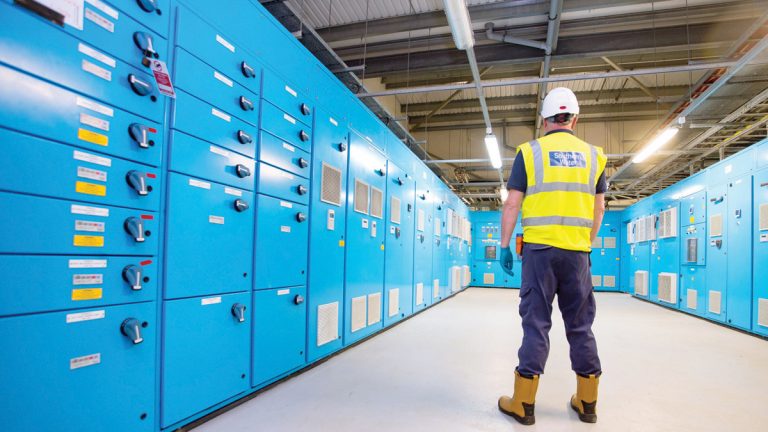
A full site wide review of the control and automation of the process is now underway – Courtesy of Southern Water
The Margate WwPS storm process has been improved as part of the resilience review; the storm screens have received the same upgrades and modifications as the inlet screens. Both inlet and storm screens are the same model albeit with different size specifications. Both remove screenings to 6mm 2D. The storm macerators have also received the same upgrades and modifications as the inlet. Both process areas, inlet and storm, share the common liseptor and lipactor equipment. To ensure these continue to operate during storm conditions, manning of the site has been increased to allow for a quick manual interception to bring any blocked pumps back into service in the shortest time possible.
As part of the current resilience scheme the storm macerated flows and receiving liceps and lipactors are to be replaced by the new Washpactors.
Once storm flows have been screened they pass to 5 (No.) canister storm pumps. These pumps operate duty/assist/assist/assist/standby and will transfer flows from the storm sump to the storm return tank at a rate of 6,400 l/s. To ensure that the maximum flows are delivered by these pumps we will be fitting flowmeters to the vertical rising mains. Due to the size of these pumps and the turnaround time when the pumps need to be overhauled, a box spare is stored on site at Margate WwPS to minimise down time.
The storm return tank is a 30m deep, 12m diameter storage tank constructed within the boundary of the site. This tank will store approximately 4,000m3 of stormwater. Once this storage has been used, flows will then be released via the long sea outfall pumps. These pumps will forward flows to the long sea outfall where the screened storm flows will mix with the treated final effluent from Weatherlees Hill B WwTW. As part of the resilience project a full overhaul of the pumps has been carried out along with a review of the PLC and control system.
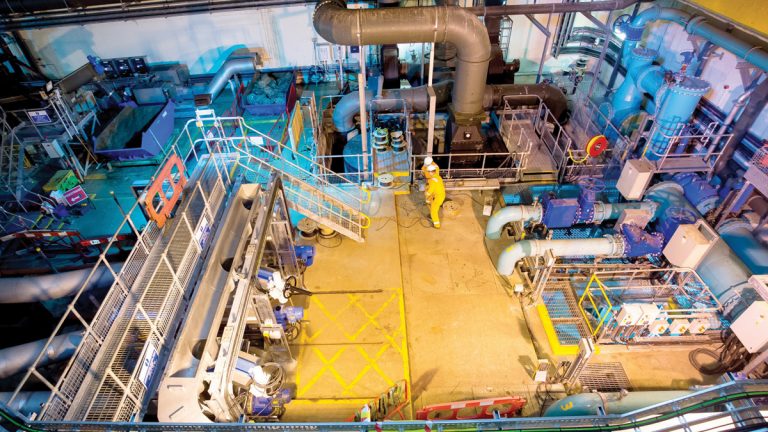
Margate WPS receives wastewater flows from the North Thanet catchment via a combined sewer system – Courtesy of Southern Water
Next steps
A full site wide review of the control and automation of the process is now underway; this review is a comprehensive review of the code. To ensure the system if fully auditable a new server has been installed and there are now individual access codes to access the control system.
Currently, Margate WwPS is in the final stages of installing the new screening handling equipment. All screenings are being processed by new Washpactors from 1 May 2017.
The completion of this extensive resilience scheme at Margate WwPS is scheduled to be completed by 2020.
The inlet pumps and storm pumps at Broadstairs WwPS are also being captured as part of the scheme. Works are to be carried out on the inlet lift pumps and the storm lift pumps. This configuration works in a duty/assist, duty/standby arrangement. The inlet lift pumps will lift flows up to 600l/s; if the flows are higher the storm lift pumps will lift flows up to 1,125l/s. An overhaul of the inlet lift pumps is still to be carried out. The storm pumps are to be replaced with larger pumps which have increased headroom.
Due to all three sites communicating with one another, a review of the control and automation at Broadstairs WwPS will now be carried out. This comprehensive review will look at the way in which the site currently runs and consider any changes that could be made to further increase the resilience of the process. Work at Broadstairs WwPS is due to be completed by 2020.
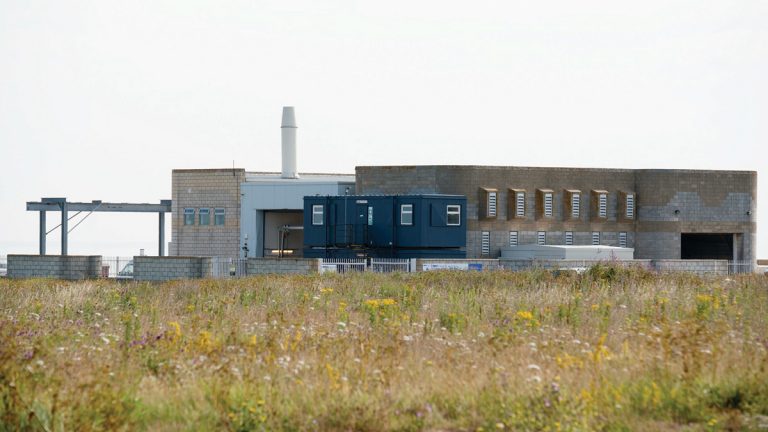
Margate WPS is located at Foreness Point and combines flows from the Margate catchment and Broadstairs WPS – Courtesy of Southern Water
Educating the local community
Alongside the investment on site, an extensive education campaign has been conducted with local residents and stakeholders. Issues are often encountered on site due to the levels of screenings received via the combined drainage network.
Through educational talks to schools as well as community and business groups, a number of open days at Margate WwPS, action days and face to face contact, Southern Water has helped to engage with customers and explain what should and should not be flushed down the toilet or washed down the sink, and to highlight the impact on our infrastructure caused by the incorrect disposal of fats, oils, grease and unflushable items, such as wet wipes and sanitary items.
In 2014, a Bathing Water Steering Group was established which includes representatives from Thanet District Council, the Environment Agency and local business and community groups to progress joint activities aimed at further improving bathing water quality across Thanet through collaborative action.







